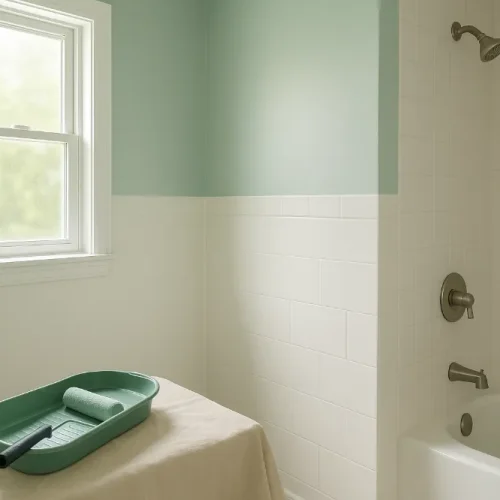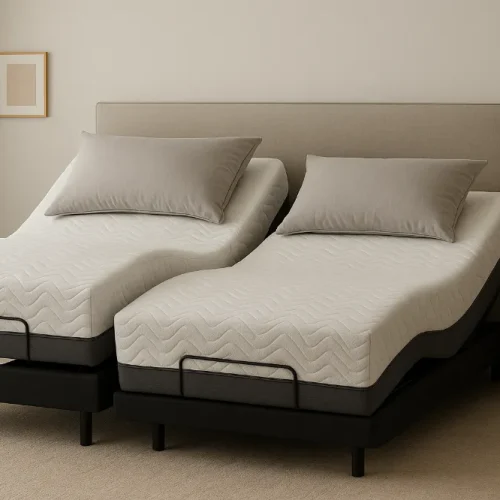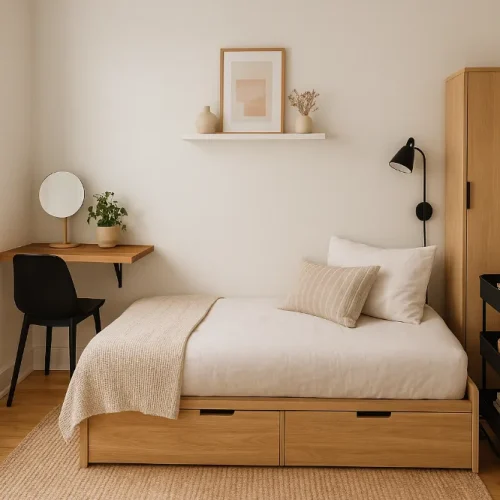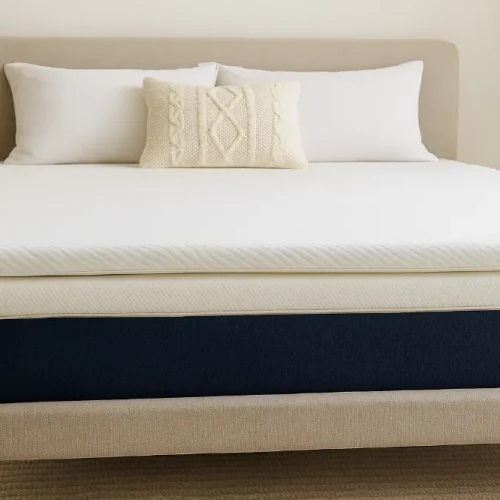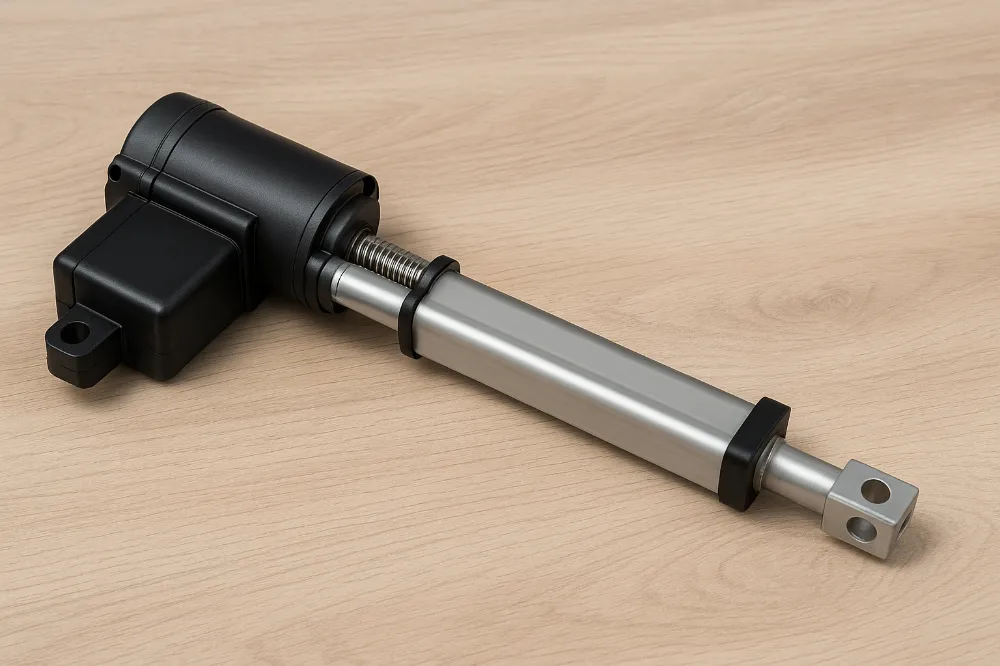
If you look around your home, there’s a good chance motion technology is already there, just hiding in plain sight. Adjustable beds that raise your head at the push of a button, recliners that extend a footrest, TV lifts that slide a screen out of a cabinet, kitchen mechanisms that bring shelves down to you, and standing desks that glide smoothly up and down all of these rely on controlled movement in a straight line. You might never have heard the term “actuator,” but you’ve definitely enjoyed what it does. Modern home design leans on this kind of quiet motion more and more: less heavy lifting by hand, fewer visible handles and cranks, and cleaner lines because the mechanics are tucked away inside the furniture.
Understanding Linear Actuators: A Simple Explanation
Essentially, a linear actuator is a machine that converts the rotary motion to the linear motion. The motor is rotating, and the rotation is changed to a push or pull a lift, lower, extension, or retraction of a part of your furniture, window, or a closet is done by the force inside the housing. The actuator is replacing your hand and doing the push in a smooth manner and it can be repeated as many times as required. Inside most electric models you’ll find a few key pieces working together: a motor, a screw or spindle that translates rotation into movement, a sliding tube or rod that actually moves in and out, and mounting points at each end so it can be fixed to whatever needs to move. All of this is wrapped in a casing that keeps the mechanism protected and compact.
There are hydraulic and pneumatic versions that use fluids or air pressure, but in homes electric designs tend to win out because they’re cleaner, quieter, easier to control, and much simpler to integrate with switches or remotes. Once you understand what is linear actuator in simple terms, it becomes much easier to see where it could fit into beds, cabinets, desks, and other everyday projects around your house.
How a Linear Actuator Actually Moves: From Button to Motion
Essentially, what happens is a series of very simple steps happening one after the other, thus resulting in the desired function. The power is sent to the actuator, which is the small electric motor inside. It changes the direction of its shaft to the one that will connect with a screw or a spindle, and finally the rotation is done on the screw or spindle. If you want to change the moving direction, it is also very easy: simply reverse the motor and the screw turns the other way, thus the rod withdraws instead of being pushed out. Additionally, the majority of actuators are equipped with internal limit switches. These are small internal stops that tell the motor, “you’ve reached the end, time to stop,” which protects the mechanism and whatever it’s moving from being forced too far.
In home projects, control can stay very straightforward. Common options include:
- A basic up/down rocker switch on a wall or piece of furniture.
- A handheld remote with a couple of buttons for extend and retract.
- A simple control box that can run one or more actuators together.
From the user’s point of view, it’s just “press and move,” even though the internal mechanics are doing the complex part.
Where Linear Actuators Show Up in Real Homes?
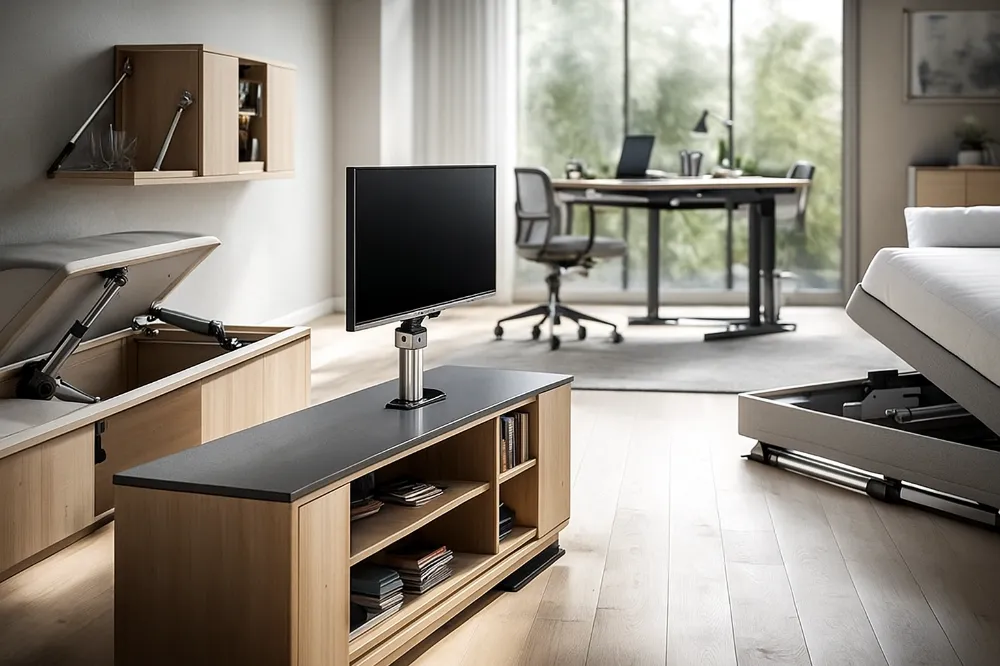
Linear actuators are very much the silent heroes behind the scenes of how a modern home works. For instance, in the living rooms, they can be used to elevate a TV from a low cabinet, change the angle of a screen to the perfect one, or open a media panel that allows speakers and consoles to be visible only when you need them. Similarly, in the bedroom they can be used for raising the head of a bed, moving a reading surface into position or opening the space under the bed without the need for any heavy lifting.
Additionally, kitchens and dining areas can also have a share of the benefits: a part of the worktop can be raised to bar height, a shelf for an appliance can be pulled out from a tall cabinet or a bench seat can be lifted gently to show the storage that is inside. A small actuator is capable of doing the heavy work for you wherever you want controlled, straight-line movement.
Choosing the Right Linear Actuator for a Home Project
Before choosing any hardware, it’s helpful to answer a few simple questions. What exactly do you want to move – a lid, a shelf, a TV, a piece of countertop? How heavy is it, including any items that might be placed on top? How far does it need to travel from fully closed to open fully? And how often will it move on a normal day? Even rough answers narrow down your options.
From there, you match the actuator to the job. Heavier designs require more force, longer travel necessitates a longer stroke, fast open close actions necessitate higher speed, and in a bedroom or living room, low noise becomes the priority. You also need to know how it will be powered from a regular outlet or a low-voltage system. Specialist companies like Progressive Automations offer ready-made linear actuators and practical guidance, so you don’t have to decode every technical detail on your own.
FAQs
A linear actuator is a device that creates straight-line motion, allowing something to lift, push, pull, or slide.
It converts the rotary motion of a motor into linear movement using a screw or spindle.
They appear in adjustable beds, standing desks, TV lifts, cabinets, and automated storage systems.
Yes electric, hydraulic, and pneumatic types exist, though electric actuators are most common in homes.
They’re quiet, clean, easy to control, and compatible with remotes or switches.
Controls can include wall switches, handheld remotes, or a simple control box.
They’re built-in stops that prevent the actuator from overextending or retracting too far.
Consider load weight, travel distance, speed, noise level, and how often it will operate.
Yes, as long as the actuator’s force rating matches or exceeds the item’s weight.
Most electric models need minimal upkeep, aside from keeping the mechanism clean and ensuring proper mounting.


